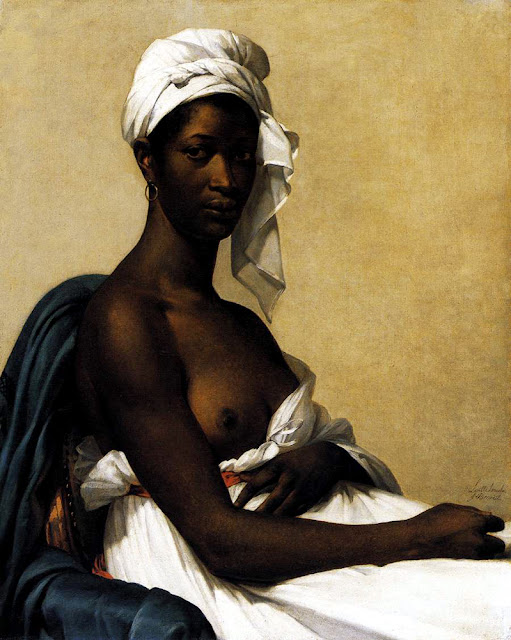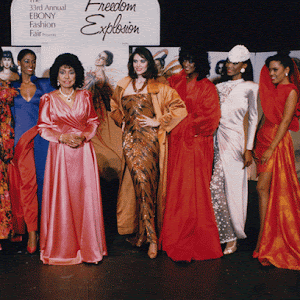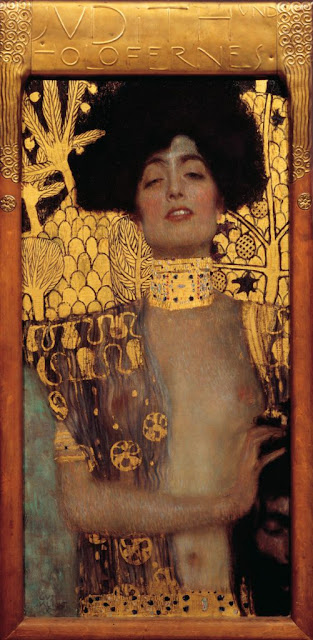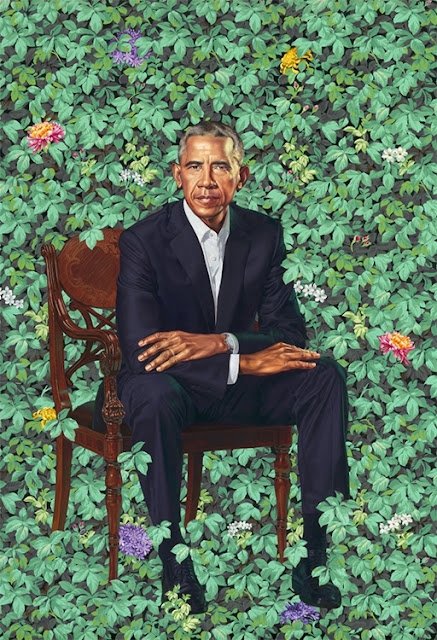 |
| Marie-Guillemine Benoist, "Portrait d'une Negresse," 1800, oil on canvas, Musee de Louvre |
The clip, directed by Ricky Saiz, took themes such as black royalty, black success, black wealth, black excellence, black beauty, black love, and the protest of the brutalization of black bodies, and dropped them in the middle of one of the bastions of whiteness.
In fact, nearly all of the pieces featured in the video are of white people, including David’s “Coronation of Napoleon,” da Vinci’s “Mona Lisa,” Scheffer’s “Francesca da Rimini and Paolo Malatesta Appraised by Dante and Virgil,” among others.
But towards the end of the clip, we see possibly the only portrait in the Louvre featuring a black person as the subject, the “Portrait d’une Négresse” (Portrait of a Black Woman), painted in 1800 by Marie-Guillemine Benoist. It is this piece, featured ever so quickly, that set everyone on their ear.
 |
| Marie-Guillemine Benoist, "Portrait d'une Negresse," 1800, oil on canvas, Musee de Louvre |
To many, her expression reads mysterious or inscrutable, to me it reads of sadness, and yearning, of weariness and annoyance at being put on display for the white gaze.
A lot of folks were praising the piece as one of few pre-20th century portraits of a black non-enslaved subject in the Louvre. To which I snorted in derision. Just because she was a servant, did not mean that she wasn’t a slave.
Considering that she was brought to France as a slave by the artist’s brother-in-law from the French island of Guadeloupe. On the French mainland, where slavery had been forbidden since the Middle Ages, a slave’s status legally had to be changed to servant or attendant. A slave by another name…
Artists frequently painted their servants in upper and middle class settings, of course they were usually white servants. The subject in Benoist’s painting is a black woman, thousands of miles from home, who had probably already been traumatized by the effects of slavery, and who most certainly was not free, even if her physical shackles had been removed.
It is said that this portrait became a symbol for women's emancipation and black people's rights. Six years previously in 1794, slavery had been abolished in France and there was a small feminist movement building in France. Both were brought to a halt four years later in 1804, when slavery was reintroduced and legal and social restriction were put on women by Napoleon Bonaparte when he became the emperor of France.
James Smalls, an associate professor of art history and theory at the University of Maryland, Baltimore County wrote extensively about the portrait and its race, gender, and class implications in a 2004 article, “Slavery is a Woman: "Race," Gender, and Visuality in Marie Benoist's “Portrait d'une Négresse” (1800),” in the journal, “Nineteenth-Century Art Worldwide.”
In the article, Smalls compares slavery and the condition of [white] women at the time, noting that this could have been Benoist’s driving inspiration for the painting. It wasn’t a commissioned piece, but painted on Benoist’s own initiative, according to Smalls.
“Although we do not know whether or to what extent Benoist partook in the volatile debates on slavery and gender current during the late eighteenth and early nineteenth centuries in France, her painting may be seen as a voice of protest, however small, in the discourse over human bondage. With the portrait, the artist responded to early nineteenth-century French racialism and the less-than-desirable treatment of women by playing upon the popular analogy of women and slaves.”
At the time Benoist painted the portrait, painting black skin just wasn’t done or taught, so she was taking great risk.
 |
| Marie-Guillemine Benoist self-portrait |
Smalls said that the artist was “always eager to publicize her painting skills, enthusiastically began the task of putting on canvas the "belle couleur noire brillante" (beautiful brilliant black color) that she found by contrasting dark flesh and white cloth.”
The painting was unusual to the public and critics, as well as to Benoist’s oeuvre, as she was known for painting portraits of family life and scenes. Prior to this portrait, which showed a black woman in a setting that would have been traditionally occupied by a white woman, blacks in European art were relegated to the background of tableaus, or attending their white master or mistress.
“Benoist's image reverses the situation—black woman is seated and posed as white woman is busy attending (painting). By depicting a black woman as exotic, servant or slave in the traditional pose and situation of white women, Benoist has turned the Portrait d'une Négresse into something of an allegory of her own condition of subservience to patriarchy,” Smalls said.
Racial equality and women’s rights, though very different in my opinion, have always been lumped together, so I totally get what Benoist was getting at in this portrait. This makes it no less offensive. The woman depicted has been robbed of identity, of voice, of opinion in life…as well as in portraiture.
While Benoist attempted to be a “white savior,” while projecting her own plight onto the woman, she actually only made things worse.
“In using the black female body as a sign of emancipation for all women, Benoist employs an operative series of struggles rendered in binary terms between feminine and masculine, between emotionalized aestheticism, passive domesticity and the desire for political expediency through portraiture as public action; between enslavement and liberty, black and white, stereotype and sympathy. In other words, I see in this portrait the "classic" ambiguity, struggle, and neurotic exchange of power played out between colonizer and colonized—a state of affairs that has become an all-too-expected feature of racial and cultural relations in the modern Western world,” Smalls said.
As to how successful this portrait was at conveying its message of women’s and black’s rights in France is debatable. African and colonial blacks were still seen as exotic, lesser beings than Europeans, so I am wondering, without context, did the “Portrait d'une Négresse” inspire change or did the sitter’s ebony skin and bared breast simply inflame male lust? Would the portrait have been more successful with the sitter fully clothed? Would it even have been praised by critics. I believe that just her black skin, draped in that white cloth, sitting for her own portrait and not reduced to a background accessory of white wealth would have been enough to get the point across.
In the "Apes**t" video, Saiz decided to show the woman without her bare breast, I wonder if he was making the statement that the portrait can serve to bring attention to the beauty of blackness without the bared breast.
Also, did Benoist do the very thing that she fighting against with this portrait by baring this woman’s breast while denying her the power to voice her opinion in the objectification of her body? It brings to mind how certain current “allies” attempt to tell us [black folks] how we should feel, how we should protest, what we should be doing, without actually listening to or understanding our plight.
I wonder how this painting could have turned out if Benoist and the nameless servant had collaborated on the message instead of Benoist forging ahead with her own reductive take on the issue.
I am of a mind to envision it as what Tim Okamura, a Japanese and British artist, is currently doing in his work, painting African-American women, fully clothed, as inspirational and aspirational beings.
 |
| Tim Okamura |
 |
| Tim Okamura, "Regent" |
 |
| Tim Okamura, "Courage 3.0" |
 |
| Tim Okamura, "I Love Your Hair" |
 |
| Tim Okamura, "Rosie No.1" |
"I don't consider myself trying to say I'm an authority on African-American culture of life per se. I'm really a storyteller, and in my portraits, there's a narrative, and I think that the people I paint, in my opinion, have a very important story that needs to be told."

















































